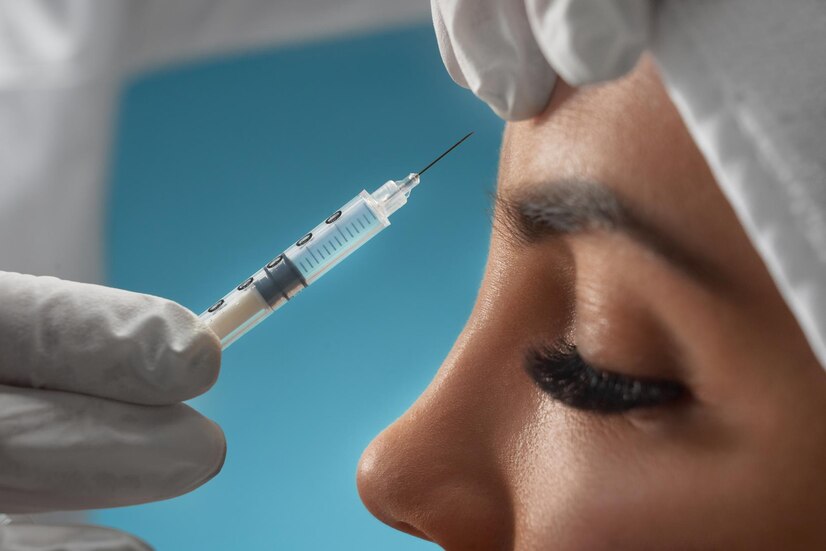Unlocking Beauty: The Science Behind Botox Treatments

Unlocking Beauty: The Science Behind Botox Treatments delves into the fascinating world of cosmetic procedures, specifically focusing on the science and technology behind Botox treatments. Botox, short for Botulinum toxin, has become a household name synonymous with youthfulness and beauty enhancement. This neurotoxic protein, derived from the bacterium Clostridium botulinum, has found extensive use in the field of cosmetic dermatology due to its ability to reduce the appearance of wrinkles and fine lines by temporarily paralyzing muscle activity.
Botox treatments have revolutionized the beauty industry, offering a non-invasive and relatively safe solution to combat the signs of aging. Understanding the science behind Botox is crucial for both providers and patients. It involves a deep dive into how the toxin works, its effects on the muscles, and the precise injection techniques that ensure optimal results.
In this blog, we will explore the mechanisms of Botox, its evolution as a cosmetic treatment, the science behind its effectiveness, and the safety considerations associated with its use. Whether you’re considering Botox for yourself or simply curious about its scientific foundations, this blog aims to provide comprehensive insights into this widely used cosmetic procedure.
The History of Botox: From Medical Marvel to Cosmetic Sensation
Botox, derived from the bacterium Clostridium botulinum, has a remarkable history. Initially used in the 1970s to treat strabismus (crossed eyes) and blepharospasm (eyelid spasms), its cosmetic applications were discovered by accident when patients noticed the smoothing of wrinkles around their eyes post-treatment.
This serendipitous discovery led to Botox gaining FDA approval for cosmetic use in 2002, revolutionizing the field of aesthetic medicine. Today, it remains one of the most sought-after non-surgical cosmetic procedures globally, with millions of treatments performed annually. Its journey from a medical marvel to a cosmetic sensation underscores its versatility and impact on the beauty industry.
How Does Botox Work? Understanding the Science of Muscle Relaxation
Botox works by blocking nerve signals in the muscles where it is injected, temporarily paralyzing or weakening them. The toxin inhibits the release of acetylcholine, a neurotransmitter responsible for muscle contractions, leading to the relaxation of targeted muscles.
This process is crucial in cosmetic treatments as it allows for the smoothing of wrinkles caused by repetitive muscle movements, such as frowning or squinting. Understanding this mechanism is essential for healthcare professionals administering Botox, ensuring precise and effective treatments for patients seeking rejuvenation.
The Role of Botulinum Toxin in Cosmetic Dermatology
Botulinum toxin, commonly known as Botox, plays a pivotal role in cosmetic dermatology, offering a range of benefits beyond its well-known wrinkle-smoothing effects.
- Wrinkle Reduction: Botox is most commonly used to reduce the appearance of facial wrinkles and fine lines, particularly in the forehead, between the eyebrows, and around the eyes.
- Dynamic Wrinkles: It is particularly effective for dynamic wrinkles, which form due to repeated muscle contractions, such as frowning or squinting.
- Hyperhidrosis Treatment: Botox is also used to treat hyperhidrosis, a condition characterized by excessive sweating, by blocking the nerve signals that trigger sweat glands.
- Migraine Management: In addition to its cosmetic uses, Botox is approved for the treatment of chronic migraines, offering relief to sufferers.
- Muscle Spasticity: Botox injections can also help manage muscle spasticity, a condition characterized by muscle stiffness and involuntary muscle contractions.
Botulinum toxin plays a multifaceted role in cosmetic dermatology, offering solutions for various cosmetic concerns and medical conditions. Its versatility and effectiveness have made it a staple in the field, providing patients with safe and reliable treatment options for achieving their aesthetic goals.
Botox Injections: Precision and Technique for Optimal Results
Administering Botox injections requires precision and expertise to achieve optimal results. Healthcare professionals must have a thorough understanding of facial anatomy and muscle structure to determine the correct injection sites and dosage. The technique involves using a fine needle to inject Botox into targeted muscles, typically in the forehead, around the eyes, and between the eyebrows.
The goal is to achieve natural-looking results by relaxing specific muscles while preserving facial expressions. Proper technique is crucial to avoid complications such as drooping eyelids or a frozen appearance, ensuring that patients achieve the desired rejuvenation without sacrificing facial mobility.
Common Uses of Botox Beyond Wrinkle Reduction
While Botox is widely known for its cosmetic applications, its uses extend beyond wrinkle reduction. In the medical field, Botox is used to treat various conditions, including chronic migraines, muscle spasticity, overactive bladder, and excessive sweating.
Its ability to temporarily paralyze muscles makes it an effective treatment for these conditions, providing relief and improving quality of life for many patients. Additionally, Botox is being explored for its potential therapeutic benefits in areas such as depression, chronic pain, and gastrointestinal disorders, highlighting its versatility and ongoing research into new applications.
The Science Behind Botox: Safety and Side Effects
Botox is a widely used cosmetic treatment that effectively reduces the appearance of wrinkles by temporarily paralyzing muscles. While generally safe, it’s crucial to understand the science behind Botox to mitigate potential risks and side effects.
- Injection Site Reactions: Temporary bruising, swelling, or redness at the injection site is common.
- Muscle Weakness: In rare cases, Botox can cause muscle weakness, especially in areas not intended for treatment.
- Drooping Eyelids or Brow: Improper injection technique or dosage can lead to drooping eyelids or brows, which is usually temporary.
- Flu-Like Symptoms: Some individuals may experience mild flu-like symptoms after Botox treatment, which typically resolve quickly.
- Allergic Reactions: While rare, allergic reactions to Botox can occur, so it’s essential to discuss any allergies with your healthcare provider before treatment.
Understanding these potential side effects and risks can help you make an informed decision about whether Botox is right for you. Always consult with a qualified healthcare professional to ensure safe and effective treatment.
Botox vs. Fillers: Understanding the Difference
Botox and dermal fillers are both popular cosmetic treatments used to reduce signs of aging, but they work in different ways. Botox works by temporarily paralyzing muscle activity, reducing the appearance of wrinkles caused by muscle contractions. In contrast, dermal fillers add volume to areas of the face that have lost elasticity and fullness, such as the cheeks and lips.
While both treatments can rejuvenate the face, they target different types of wrinkles and facial aging. Consulting with a qualified healthcare professional can help determine the most suitable treatment based on individual goals and aesthetic concerns.
The Evolution of Botox: From Wrinkle Smoothing to Preventative Aging
Botox, initially renowned for its ability to smooth wrinkles, has undergone a significant evolution, transcending its original purpose to become a cornerstone in the realm of preventative aging.
- Youthful Maintenance: Botox is now used by younger demographics to prevent wrinkle formation.
- Changing Attitudes: Society increasingly accepts cosmetic procedures as part of routine skincare.
- Proactive Skincare: Botox has become a proactive measure against aging rather than just a reactive treatment.
- Long-Term Benefits: Early use of Botox may lead to sustained youthful skin and delayed onset of wrinkles.
- Wider Acceptance: More people are embracing preventative aging measures, expanding the market for Botox and similar treatments.
The evolution of Botox from wrinkle smoothing to preventative aging underscores a broader cultural shift towards embracing proactive skin care practices.
Debunking Myths About Botox: Separating Fact from Fiction
Botox is surrounded by myths and misconceptions, leading to misinformation about its safety and effectiveness. One common myth is that Botox is toxic and can spread beyond the injection site, causing harm. In reality, when administered by a qualified healthcare professional, Botox is safe and remains localized to the treatment area.
Another myth is that Botox results in a frozen or expressionless appearance. While this can occur with improper administration, skilled providers can achieve natural-looking results that preserve facial expressions. Debunking these myths is essential for individuals considering Botox, helping them make informed decisions about their skincare and aesthetic treatments.
Future Trends in Botox Research and Development
In the rapidly evolving field of cosmetic dermatology, ongoing research and development are paving the way for exciting future trends in Botox treatments. Here are some key areas to watch:
- Nanotechnology: Researchers are exploring the use of nanoparticles to enhance the delivery and effectiveness of Botox, potentially reducing the need for multiple injections and increasing treatment longevity.
- Gene Therapy: Gene editing technologies like CRISPR are being investigated to modify the genes responsible for muscle contractions, offering a more targeted and long-lasting approach to wrinkle reduction.
- Synthetic Botox: Scientists are developing synthetic versions of Botulinum toxin that mimic the effects of Botox but with improved safety profiles and longer-lasting results.
- Personalized Treatments: Advancements in genetics and biotechnology may lead to personalized Botox treatments tailored to individual skin types and aging patterns.
- Combination Therapies: Future trends may see Botox being used in conjunction with other cosmetic procedures, such as dermal fillers or laser therapy, to achieve more comprehensive rejuvenation results.
As research continues to push the boundaries of Botox treatments, the future holds exciting possibilities for safer, more effective, and personalized cosmetic enhancements. Stay tuned as these trends reshape the landscape of aesthetic medicine.
The history and science behind Botox treatments highlight its evolution from a medical marvel to a cosmetic sensation. Understanding how Botox works and its role in cosmetic dermatology is crucial for both providers and patients. The precision and technique required for Botox injections ensure optimal results, and its uses extend beyond wrinkle reduction to various medical conditions. Safety considerations are paramount, and debunking myths about Botox is essential for informed decision-making.
Looking ahead, future trends in Botox research and development promise expanded therapeutic applications and improved outcomes. If you’re considering Botox treatments, consult with a qualified healthcare professional to discuss your goals and options. Contact American Laser Med Spa – Midland at (432) 689-7546 or visit 4906 N. Midkiff Midland, TX 79705 to learn more and schedule your consultation. Unlock your beauty potential with Botox today!







